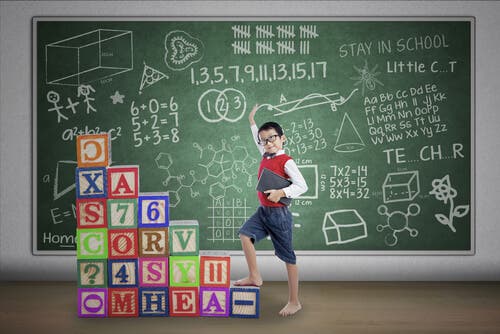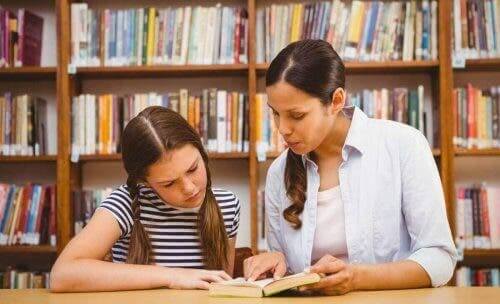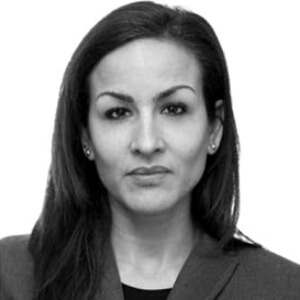Ausubel's Meaningful Learning Theory

David Pau Ausubel, a psychologist and pedagogue born in New York in the year 1918, developed the meaningful learning theory. Ausubel’s theoretical developments, like those of Jean Piaget and Lev Vigostky, have greatly influenced the pedagogical current of constructivism.
To this day, the meaningful learning theory Ausubel proposed has become an alternative to the most generalized form of rote learning. In this sense, rote learning is a type of learning that students quickly forget.
Unlike rote learning, meaningful learning is progressive and works with breaks and continuities between old and new knowledge. Its goal is for students to grasp and build new meanings.
Previous knowledge as the foundation of Ausubel’s meaningful learning theory
Ausubel’s theory of how people learn argues that learning occurs when you increase and perfect your previous knowledge. Therefore, it gives vital importance to previous knowledge and to the logic of thought that each person uses to learn.
Ausubel stated that a cognitive bridge is created between new ideas that interact with old and previous ones, provided that they’re specifically relevant. These relevant ideas serve as anchors for the new information, which is why Ausubel called them “anchoring ideas.”
In addition, he stated that these anchoring ideas aren’t just concepts. Thus, they can also be an image, a symbol, a proposition, or a mental scheme.

The interesting thing about Ausubel’s approach is that it states that, as a new concept is understood, the previous ideas related to it modify. In other words, old concepts and knowledge acquire new meanings or become more complex and elaborate. In fact, these concepts can even be used to corroborate other existing concepts, giving them greater stability.
How to achieve meaningful learning
Ausubel posed two fundamental conditions for meaningful learning to be possible:
The learning material must be potentially meaningful
To make educational material, meaning classes, books, and programs (software), potentially meaningful, they must have the following characteristics:
- Be related to the students’ previous knowledge. This is the main characteristic that the new educational material must possess.
- Logical sequence. This means that the material must present an initial perspective of the whole and then advance in the differentiations of categories, properties, or criteria.
- Based on examples. In other words, to show the new material, the teacher must find clear examples to support their explanation.
- Serve as “prior organizers”. These are also educational materials, affirmations, phrases, or examples, but introductory ones, presented before the learning material itself. They’re organizers that serve as a bridge between what the student knows and what they should know, so that they can significantly learn new concepts.
The learner must have a predisposition to learn
Although Ausubel states that the student has to have this predisposition, his focus is on the educator. Educators must consider their students’ prior knowledge and ideas in order to teach the new material.
On the other hand, Ausubel also considers a motivational and emotional aspect as a condition for meaningful learning to occur. Thus, it’s also the teacher’s responsibility to motivate their students to learn, catching their attention based on a previous concept, image, idea, or mental scheme.
Related to the motivational aspect Ausubel recognized, he also highlighted some external factors that must be in agreement and harmony because they influence the achievement of learning. These factors are:
- The classroom climate. Students’ and the teacher’s peace of mind, how they address each other, the tones of voice, etc.
- How objects are arranged inside the classroom. Ausubel argued that the arrangement of tables, chairs, and other objects should help both avoid distractions and make the students and the teacher feel comfortable.

Types of meaningful learning
Ausubel distinguished three types of learning:
- Representation learning. This refers to an elementary learning that the other types of learning depend on. It consists of the attribution of meanings to certain symbols, associating them to a concrete and objective part of reality. For example, a child learns the word “ball” when the meaning of that word represents that ball they perceive.
- Concept learning. In this learning, the meaning is no longer associated with a specific symbol but with an abstract idea. For example, it’s no longer about the concrete ball the child sees, but the concept of “ball”, with its characteristics and attributes generalizable to other balls, of other colors, sizes, and textures.
- Proposition learning. The learning that stems from the logical combination of concepts. In other words, a proposition is a phrase that allows you to express a complex idea and consists of concepts with unitary and interrelated meanings.
The importance of meaningful learning today
Ausubel’s theory of meaningful learning is very useful in modern pedagogy. Planning teaching based on students’ prior knowledge to motivate and catch their attention is the essence of Ausubel’s meaningful learning theory. It’s a central idea that, in addition, implies the consideration of each student’s individuality and level of development.
Furthermore, the important thing about achieving meaningful learning is that the acquired knowledge is active and durable. Thus, it’s unlike memorized content, which is very easily forgotten in the short term.
Nowadays, almost all the teaching processes developed in schools have the precise goal of achieving the much-discussed meaningful learning. Unlike rote learning, this implies that students truly understand and use the knowledge they learn.
All cited sources were thoroughly reviewed by our team to ensure their quality, reliability, currency, and validity. The bibliography of this article was considered reliable and of academic or scientific accuracy.
- Próximo, I. (2003). El aprendizaje verbal significativo de Ausubel. Algunas consideraciones desde el enfoque histórico cultural. Universidades, (26), 37-43. Recuperado de https://core.ac.uk/download/pdf/25653079.pdf
- Moreira, M. A. (2012). ¿ Al final, qué es aprendizaje significativo?. Recuperado de https://riull.ull.es/xmlui/bitstream/handle/915/10652/Q_25_%282012%29_02.pdf?sequence=5&isAllowed=y
- Asubel, D.P. (2000). The acquisition and retention of knowledge: A cognitive view. Dordrecht, Kluwer Academic Publishers.
- Acosta, M. (2010). Los organizadores previos: Una estrategia de enseñanza para el logro de un aprendizaje significativo. Revista de la Facultad de Ingeniería Universidad Central de Venezuela, 25(3), 07-65. Recuperado de http://ve.scielo.org/scielo.php?script=sci_arttext&pid=S0798-40652010000300002
